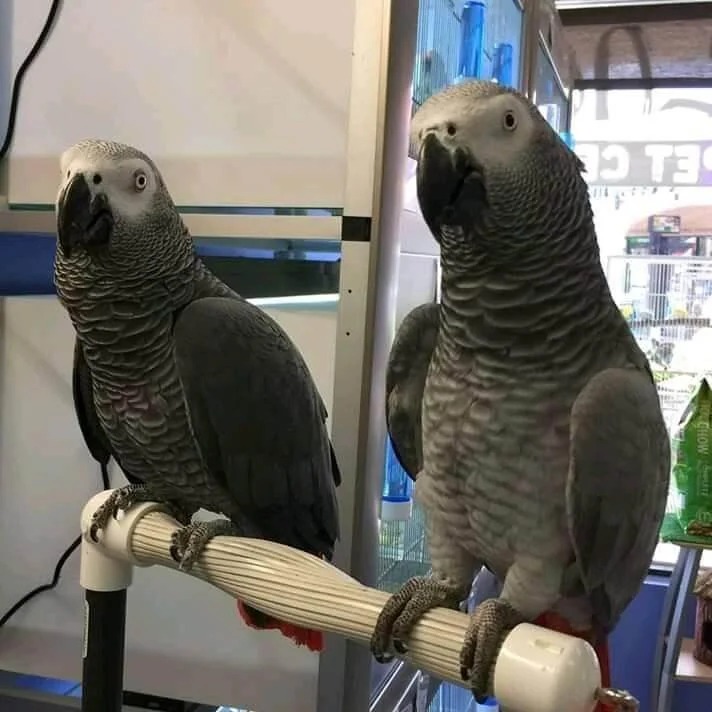5 Killer Quora Answers On Congo African Grey Parrot
페이지 정보

본문
The Congo African Grey Parrot: A Comprehensive Guide
Intro
The Congo female african grey parrot grey african parrot Parrot (Psittacus erithacus) is among the most smart and fascinating bird types on the planet. Distinguished for their exceptional cognitive abilities and sensational plumage, these parrots have gotten appeal as family pets and buddies. This short article will delve into the attributes, care needs, training, and the function of the Congo African Grey Parrot in its natural environment. Furthermore, it will address typical concerns about their habits and care.
Physical Characteristics
The congo african grey parrot (click this over here now) is differentiated by its striking physical functions:
| Feature | Description |
|---|---|
| Size | Roughly 12 to 14 inches in length |
| Weight | Varieties from 12 to 18 ounces |
| Color | Predominantly grey feathers with a bright red tail |
| Beak | Strong and hooked, ideal for cracking seeds |
| Eyes | Dark eyes, often described as "soulful" |
This medium-sized parrot showcases a mix of elegant features and playful temperament, making it a preferred amongst bird lovers.
Natural Habitat
The Congo African Grey Parrot is native to the rainforests of Central Africa, especially in countries like the Democratic Republic of the Congo, Gabon, and Cameroon. They prosper in dense forests near rivers and feed primarily on:
- Nuts
- Seeds
- Fruits
- Berries
Their natural environment plays a vital function in their development, as foraging assists stimulate their intelligence and activity levels.
Intelligence and Training
Known for their remarkable mental capabilities, Congo African Grey Parrots are typically considered one of the most smart bird species. They have actually demonstrated the capability to discover a large variety of words and expressions, in addition to the capability to comprehend context. Some well-known qualities consist of:

- Mimicry: They can imitate sounds, including human voices and environmental sounds.
- Problem-Solving Skills: They can navigate puzzles and difficulties in their environment.
- Social Interaction: They flourish on social interaction and can develop strong bonds with their human companions.
Training Techniques
Training a Congo African Grey can be fulfilling however requires perseverance and consistency. Here are some efficient training methods:
- Positive Reinforcement: Reward preferred habits with treats and appreciation.
- Short Sessions: Keep training sessions quick (10-15 minutes) to preserve their attention.
- Consistency: Use the very same commands and signals to avoid confusion.
Caring for Congo African Grey Parrots
Taking care of a Congo african grey parrot eggs for sale Grey requires a commitment to supply a revitalizing environment, well balanced diet plan, and regular health check-ups. Below are key elements of their care:
Diet
A well-balanced diet plan is essential for their health. The following need to be consisted of:
- Pelleted Diet: High-quality pellets created for African Grey Parrots.
- Fresh Vegetables: Leafy greens, carrots, and bell peppers.
- Fruits: Apples, bananas, and berries (in small amounts).
- Nuts and Seeds: Treats to be offered sparingly due to high-fat content.
Housing
An adequate living environment is essential:
- Cage Size: Minimum dimensions of 24x24x36 inches, offering enough space for movement.
- Perches: Varied sizes and materials to promote foot health.
- Toys: Interactive and revitalizing toys to avoid boredom.
Health Considerations
Regular veterinary check-ups are crucial to monitor their health. Typical health issues include:
- Feather Plucking: Often triggered by tension or monotony.
- Weight problems: A result of inappropriate diet plan and absence of exercise.
- Respiratory Illnesses: Sensitive to dust and bad air quality.
Creating a stress-free environment is essential to keeping their overall well-being.
The Role of Congo African Grey Parrots in Conservation
With their declining populations due to habitat loss and unlawful trade, Congo African Grey Parrots are listed on the IUCN Red List as "near threatened." Preservation efforts concentrate on:
- Preserving natural environments.
- Managing gizmo the grey parrot family pet trade.
- Supporting reproducing programs.
Organizations around the world work tirelessly to ensure these spectacular birds flourish both in the wild and as precious buddies.
Frequently Asked Questions about Congo African Grey Parrots
Q1: How long do Congo African Grey Parrots live?
A: Congo African Grey Parrots can live up to 50 years or more with appropriate care, making them a long-term commitment as animals.
Q2: Do Congo African Grey Parrots require companionship?
A: Yes, these parrots are highly social creatures and grow on interaction. Preferably, they should be kept in pairs or get ample human companionship.

Q3: Are Congo African Grey Parrots noisy?
A: They can be noisy, especially if they are bored or looking for attention. Offering toys and stimulating activities helps decrease excessive vocalization.
Q4: Can Congo African Grey Parrots be taught to talk?
A: Yes, they are known for their capability to discover a vast vocabulary and can imitate words and expressions efficiently.
Q5: What is the finest diet plan for a Congo African Grey?
A: A balanced diet ought to consist of high-quality pellets, fresh vegetables, fruits, nuts, and seeds. Each part needs to be fed in moderation to ensure health.
The Congo African Grey Parrot is an extraordinary types known for its intelligence, striking appearance, and social nature. By providing appropriate care, enriched environments, and social interaction, owners can enjoy a fulfilling relationship with these exceptional birds. As they face difficulties in the wild, it is important to promote preservation efforts to secure their future, guaranteeing that others may value their beauty and friendship for several years to come.
- 이전글The 10 Scariest Things About Non-Standard Wooden Pallets 25.04.29
- 다음글The 10 Most Scariest Things About Stackable Wooden Pallets 25.04.29
댓글목록
등록된 댓글이 없습니다.


